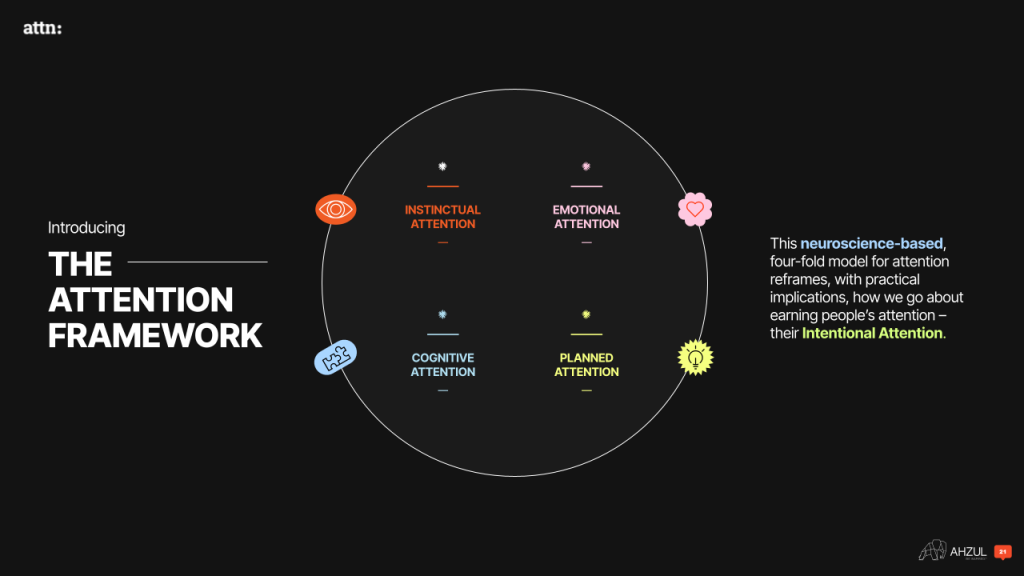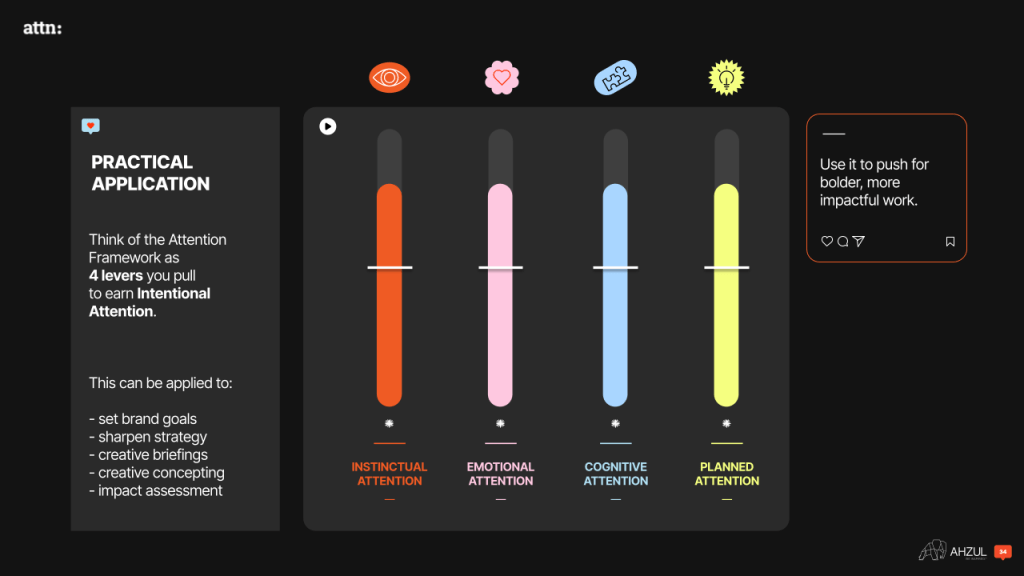Meet one-on-one with ADWEEK–curated partners to help identify and solve key business challenges. Apply for ADWEEK Connect, the innovative virtual networking program.
A few months ago, while I fought for mere seconds of attention in social feeds at work, I also ended each day by rewatching all 6 seasons of The Sopranos. If we can be immersed by characters like Tony Soprano for over 78 hours, is our capacity to pay attention actually dwindling?
Or have we been focused on solving the wrong problem?
It turns out we’ve been wrong about attention. It’s not disappearing. You just have to know how to earn it.
In creative reviews, a favorite and deceptively hard question to ask is: Would you actually watch this? Would your bestie, or your grandma, care? Now, The Attention Framework gives us the tools to answer these questions—with intuition and science.
Our brains are hardwired for 4 types of attention

Created in partnership with the world’s top neuroscientists, The Attention Framework outlines four proven attention types. Since I grew up in the era of boy bands, I like to think of them as sort of a musical supergroup. The band members include:
- Instinctual attention: triggered when something is surprising, loud, or flashy. (Made you look!) This is like the wildly energetic member of the boy band who still hasn’t quite grown up.
- Emotional attention: gets activated when you connect with or care about what you’re seeing. You get pulled in, much like the introspective member of the boy band who always sings the ballads.
- Cognitive attention: comes up when you’re presented with the unexpected—something that needs interpreting, solving. We’re not talking Rubik’s Cubes, but letting people connect their own dots can be powerful. Think: the smart “bad boy” who answers press questions with cryptic, clever statements.
- Planned attention: drives a decision to engage. It’s focused, goal-oriented, and also the most difficult to capture. This is the responsible one who plans the tours and makes sure the band stays out of trouble.
They can be earned at the same time; there’s no right order.
Attention types are strongest when combined
Our research found that combining two or more attention types increases the length of time spent on your content and drives better brand results, including purchase intent. Like my favorite boy bands from the ’90s, they work best when singing together.
In our study, we found that when using two or more attention types, 71% of our panel were willing to spend over 2 minutes with a brand’s activity, no matter if it’s a celebrity partnership, shopping online, or yes, even an ad. That’s over 2 minutes harnessed in a crowded space, competing with cute cat videos, Slacks from your boss, and nonstop news notifications.
And for those wondering, The Sopranos hits all four attention types, which is probably why I’ve watched the whole thing twice now.
Building the attention framework into your creative process

The Attention Framework is not another robotic, mandatory checklist or another process to be implemented. Instead, it’s an additive tool that builds on and articulates creative intuition. And better yet, it is shown to ensure effectiveness, helping us make work that actually works.
When using the framework in creative briefs, reviews, and even external pitches, it gets us to the good questions and aha moments. For example, this concept takes the expected thing, and flips it on its head—that’s cognitive attention. But to make it even stronger, how could we combine it with another attention type? Or, we know we love an idea … but why? Well, because it hits on not one but three of the attention levers. Now that’s powerful.
Creatives today are asked for more, for bigger, for better—and sometimes to do it all in less time. This practical framework determines not only if an idea is good, but also why. It helps us make more elevated, effective work that actually breaks through.
Nothing against goldfish, but we believe humans have a lot more capacity to think, care, plan, and yes, pay attention. You just have to earn it.










